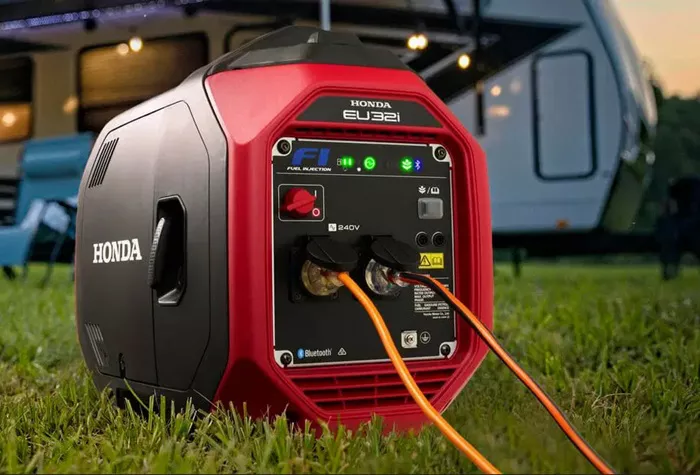Choosing the best size portable generator for home use is critical. A generator that’s too small won’t power what you need. One that’s too large may waste fuel and cost more than necessary. In this article, we’ll explain how to size your generator correctly, what features matter, and how different types of home generators serve different purposes.
Why Generator Sizing Matters
Generators come in many sizes, from small units that power only a few lights to large systems that support your entire home. The size refers to the generator’s power output, measured in watts. If you choose the wrong size, you may face electrical issues or even damage to appliances.
Common Household Power Needs
Before picking a generator, list the items you want to power. Essential items may include:
- Refrigerator (600-800 watts)
- Sump pump (750-1,500 watts)
- Lights (60-300 watts per bulb)
- Wi-Fi router (100 watts)
- TV (150-400 watts)
- Microwave (600-1,200 watts)
- Window air conditioner (500-1,500 watts)
- Gas furnace fan (400-800 watts)
Starting vs. Running Watts
Appliances often need more power to start than they do to keep running. This is called surge or starting watts. For example, a refrigerator may need 1,200 starting watts but only 700 running watts. A good generator must handle both.
How to Calculate the Right Generator Size
Step 1: List All Critical Devices
Start with the essentials. Add up the running watts for each device. Don’t forget to include any special equipment you rely on, such as medical devices.
Step 2: Account for Surge Watts
Some appliances, especially those with motors, need extra power to start. Add their surge watt requirements to your total.
Step 3: Add a Safety Buffer
Include at least 10% extra capacity. This prevents overloads and allows the generator to run efficiently. If your total power need is 3,000 watts, look for a generator rated for at least 3,300 watts.
Sample Calculation
If your essentials require 2,000 running watts and 3,000 starting watts, a 3,500-watt portable generator is a safe choice. It offers extra buffer room and will not be overloaded.
Types of Portable Home Generators
There are many home generator types to consider when selecting a unit. The most common include:
Conventional Portable Generators
These run on gasoline, are affordable, and offer a decent power output. They’re great for short outages or powering a few essentials. However, they are noisy and not ideal for sensitive electronics.
Inverter Generators
These are quieter, more efficient, and safe for electronics. They produce clean power and adjust engine speed based on load. They’re perfect for smaller homes or apartments.
Dual-Fuel Generators
These run on gasoline or propane, offering flexibility. Propane is safer to store long-term and burns cleaner, while gasoline is widely available. These are ideal for extended outages.
Solar Portable Generators
These use solar panels to charge batteries. They’re quiet and eco-friendly, but their power output is limited. They are useful for small devices and light backup needs only.
Best Size Generator Based on Home Size
Small Apartment or Condo
Power needs: 1,000–2,000 watts. An inverter generator is ideal for basic needs like lights, phone charging, and a laptop.
Small to Medium Home
Power needs: 3,000–5,000 watts. You can run the fridge, lights, TV, and even a small window AC. A dual-fuel generator is a good fit.
Large Home
Power needs: 5,000–7,500 watts or more. You’ll need more power to support several rooms, larger appliances, or HVAC systems.
Fuel Types and Runtime
Gasoline
Easy to find but volatile. Must be stored safely. Average runtime is 8–12 hours on a full tank.
Propane
Cleaner burning and stores longer. Slightly less power than gasoline. Runtime depends on tank size (20–100 lbs).
Solar and Battery
Eco-friendly but low power. Ideal for small devices, not heavy appliances.
Runtime Considerations
Choose a generator with a runtime of at least 8 hours at 50% load. This ensures it will last overnight or during a typical workday without refueling.
Other Features to Consider
Electric Start
Push-button starting is easier than pull cords, especially in emergencies.
Wheels and Handles
Portable doesn’t always mean light. Wheels and folding handles help move it around the yard or garage.
Noise Levels
Measured in decibels (dB). Inverter generators are quieter (50–60 dB), while standard models may be louder (70–80 dB).
Outlets and Ports
Check for multiple outlets: 120V AC, USB ports, and even 240V for larger equipment. Circuit breakers add safety.
Transfer Switch Compatibility
Important for whole-home power or seamless connection to your home’s electrical panel.
Common Generator Sizes and What They Power
- 2,000–3,000 watts: Lights, phone, laptop, fridge
- 3,000–5,000 watts: Fridge, sump pump, lights, microwave
- 5,000–7,500 watts: Multiple rooms, furnace fan, AC
- 7,500–10,000+ watts: Full home coverage
Tips for Safe and Effective Use
Operate Outdoors
Never run a generator inside a home, garage, or enclosed space. Risk of carbon monoxide poisoning is high.
Regular Maintenance
Check oil, spark plugs, and fuel regularly. Store with fuel stabilizer if unused for long periods.
Use Proper Extension Cords
Only use heavy-duty cords rated for outdoor use. Check wattage ratings to avoid overloads.
When to Consider a Standby Generator
If your power needs exceed 10,000 watts or you want seamless operation during outages, consider a standby system. These are professionally installed and run on natural gas or propane. Visit Home Generators Uses to learn how different generators fit everyday needs.
Conclusion
Picking the best size portable generator for home use comes down to your power needs, budget, and lifestyle. Start by listing your essential devices, calculate total wattage, and add a safety buffer. Then choose the right type—conventional, inverter, dual-fuel, or solar. With the correct size and features, your home will stay comfortable and safe during any power outage.

